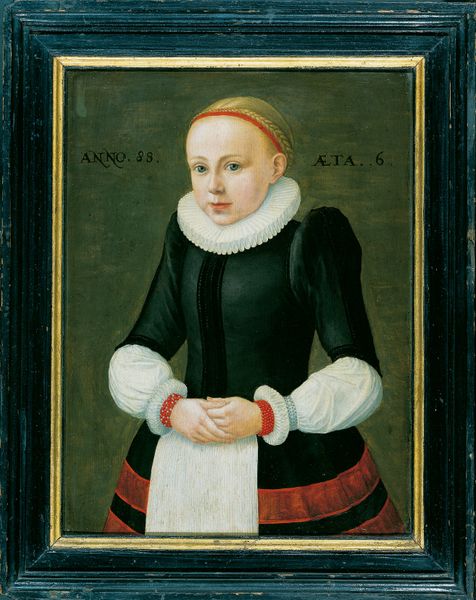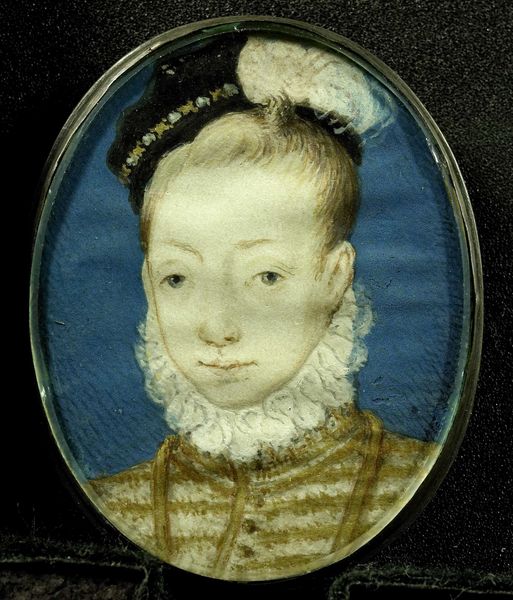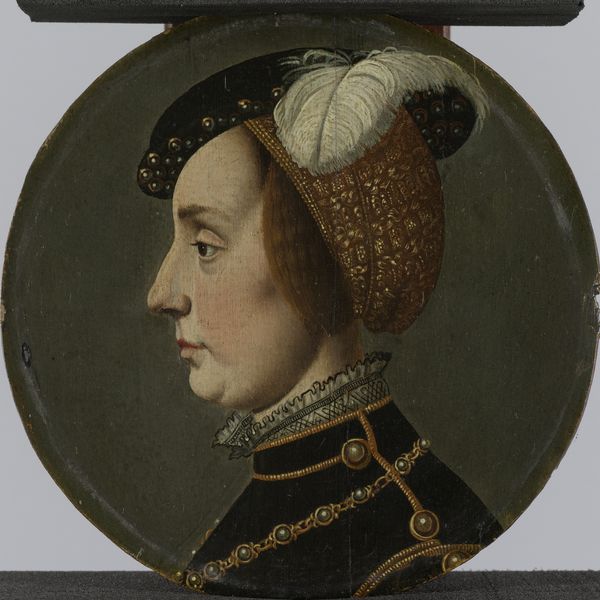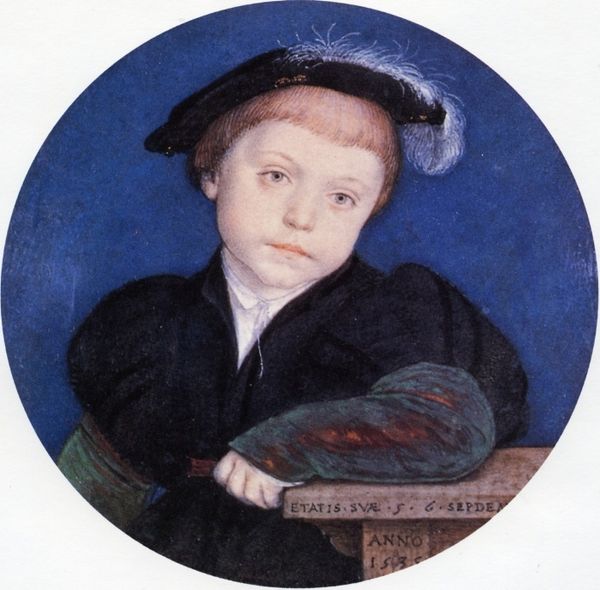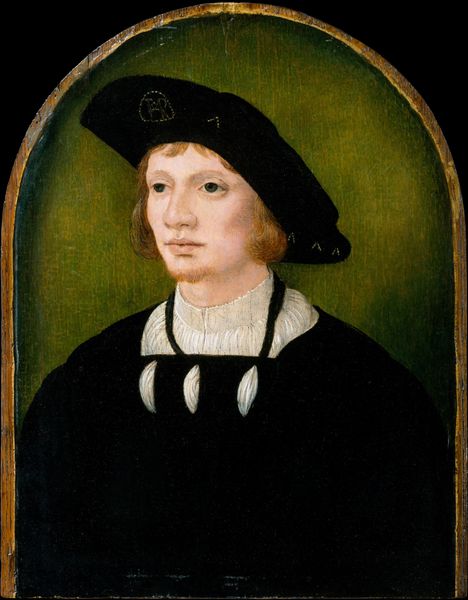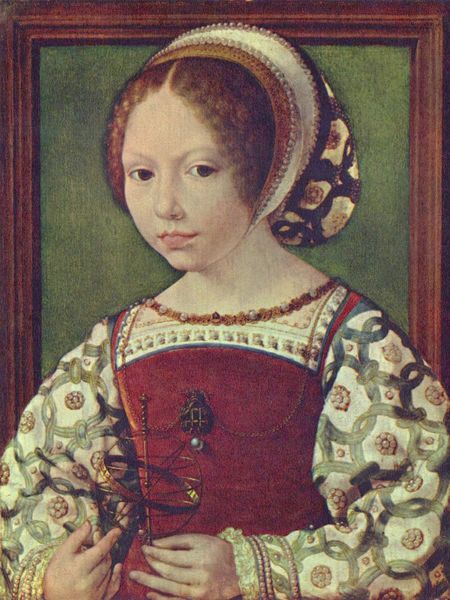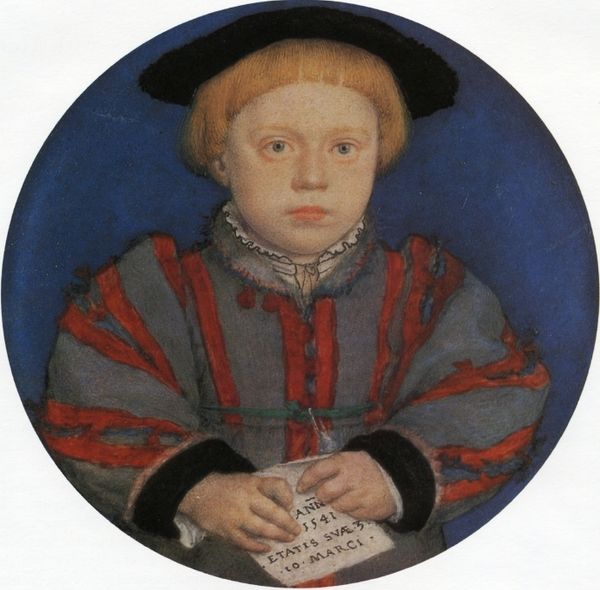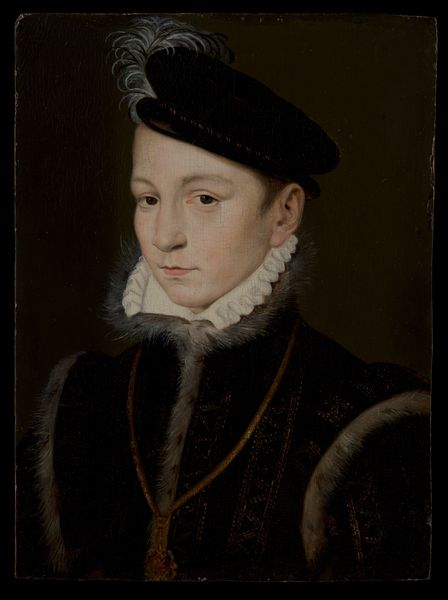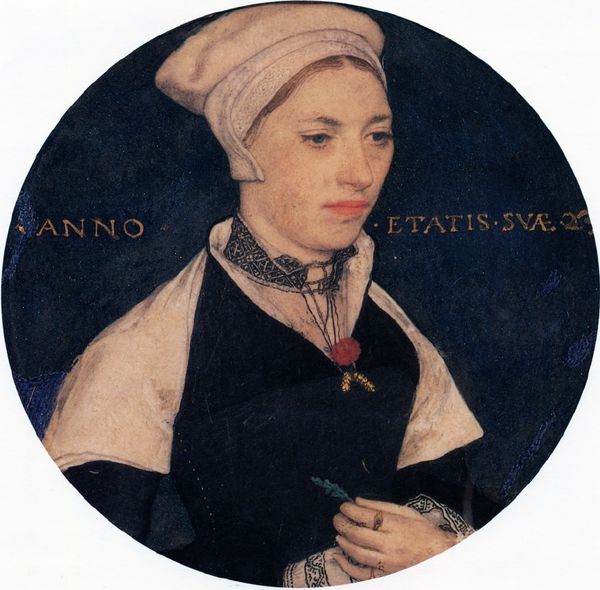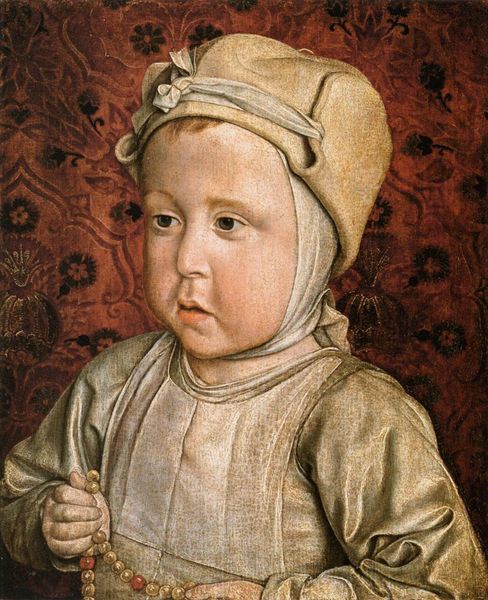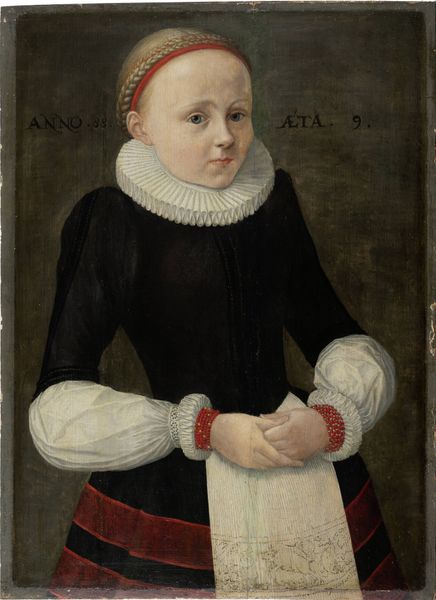
oil-paint
#
portrait
#
high-renaissance
#
oil-paint
#
mannerism
#
figuration
#
oil painting
#
history-painting
#
italian-renaissance
Dimensions: 32.4 x 32.4 cm
Copyright: Public domain
Editor: Here we have Hans Holbein the Younger's "Edward, Prince of Wales," painted in 1543, an oil painting depicting the young prince in profile. It’s striking how formal and serious a six-year-old looks. What catches your eye most about this portrait? Curator: For me, this piece is a potent symbol of the Tudor dynasty’s self-presentation. Consider the historical context. Henry VIII desperately wanted a male heir. Holbein was commissioned to create images projecting the power and legitimacy of the Tudor line. The inscription 'aetatis suae VI' reinforces this; it's not just a portrait, but a proclamation of the prince's very existence and potential rule. What effect does this have in framing Edward's later image, especially as king? Editor: It really makes you think about how royal portraits functioned as propaganda! He's so young, yet the weight of the crown already seems to be on his shoulders. What do you think the choice of profile view adds to this political message? Curator: The profile is interesting, isn't it? It harkens back to Roman imperial portraiture, further associating the Tudors with notions of enduring power and authority. Holbein consciously used historical visual cues. And notice how Edward's gaze is directed forward, as if towards the future of England? It’s art creating not just a likeness, but a carefully crafted narrative. Do you agree? Editor: Yes, absolutely. The connection to Roman imagery makes a lot of sense now. So, it’s less about capturing the child’s personality, and more about crafting an image of future power. Curator: Precisely! Holbein masterfully fulfilled his role as a visual architect of Tudor power. It serves as a constant reminder that images can profoundly shape and solidify political narratives. Editor: That's fascinating. I'll definitely look at portraits differently now. Thank you! Curator: My pleasure! Considering artwork from multiple perspectives always teaches something new.
Comments
No comments
Be the first to comment and join the conversation on the ultimate creative platform.
